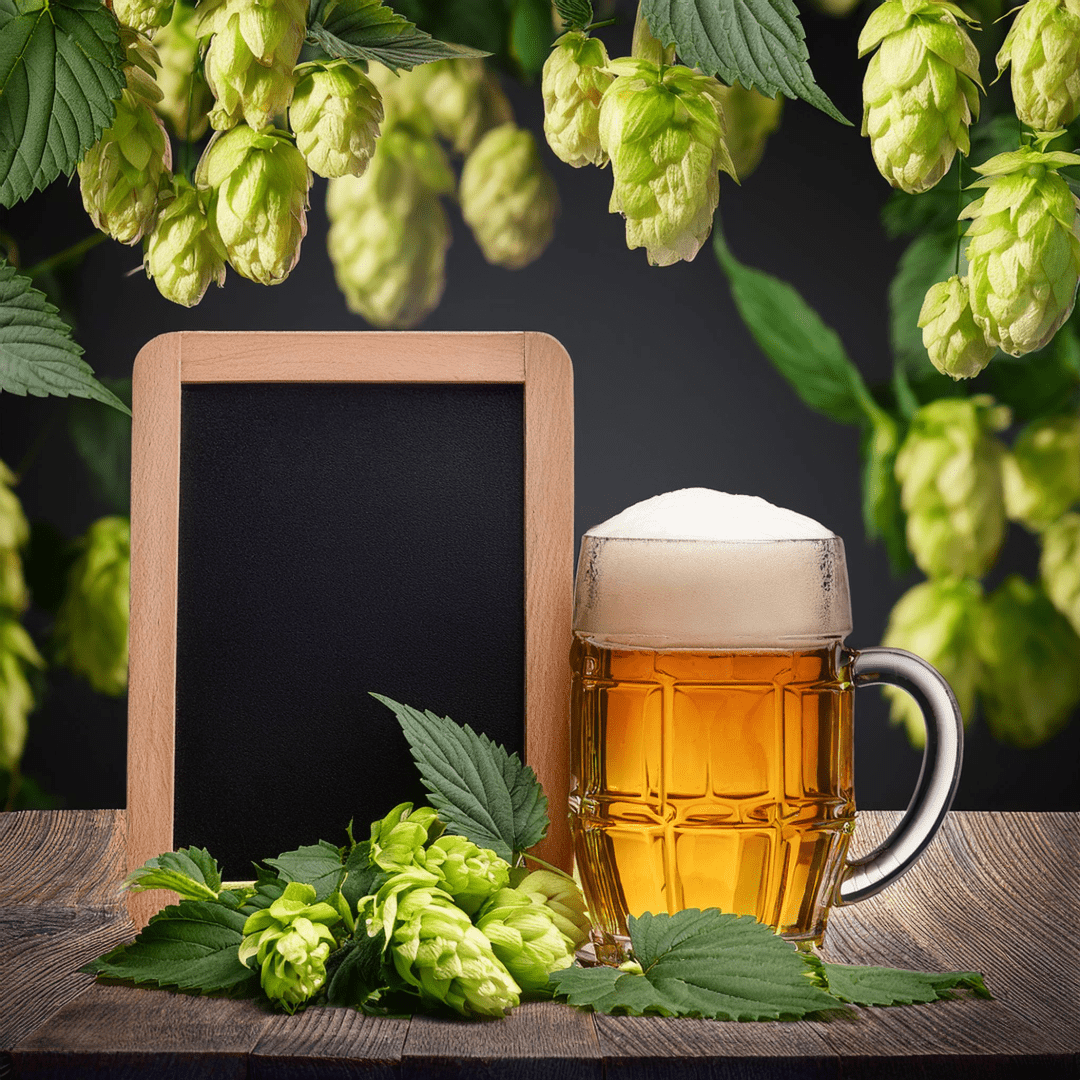In this blog we delve deep into the fascinating world of hops, an essential ingredient in most beers. From the origins and history to the different regions and varieties, we explore everything you need to know about these beautiful flowers and their role in brewing.
Table of contents
- 🌱 The Growth of Hops
- 🍺 Origin of Hops in Beer
- 📜 The First Hops: History and Uses
- 🌍 The Transition to Aroma and Taste
- 🌾 Bavaria and Bohemia: The Early Years
- 🍻 Halot Mle: A German Classic
- 🇨🇿 SARS: The Czech Favorite
- 🍊 Mandarina Bavaria: A Modern Variety
- 🌱 The Characteristics of European Hops
- 🌍 The Impact of Immigration on Hops
- 🔮 The Future of British Hops
- 🔍 Conclusion and Outlook
- ❓ Frequently Asked Questions
🌱 The Growth of Hops
Hops are not only a crucial ingredient in beer; they are also fascinating plants that require specific growing conditions. Hops grow best in temperate climates, with plenty of sunlight and well-drained soil. The major hop growing areas in the world are the Pacific Northwest in the US, the United Kingdom, Central Europe, and New Zealand and Australia.
Optimal Growing Conditions
Hops have some specific requirements for their growth:
- Sunlight: Hops need at least six hours of direct sunlight per day.
- Soil type: Well-drained, fertile soil is essential for healthy root development.
- Water: Regular irrigation is important, especially during dry periods.
Cultivation and Harvest
The cultivation of hops begins with planting young hop plants, which quickly develop into climbing plants. They can grow up to 6 meters high. During the harvest, which usually takes place in late summer and early autumn, the hop cones are carefully picked.
Processing of Hops
After harvest, hops are dried and often processed into pellets. This process helps to preserve the essential oils and acids that are so important to the taste and aroma of beer. Processing into pellets also makes it easier to store and transport hops.
🍺 Origin of Hops in Beer
The origins of hops in beer go back thousands of years. Hops were first documented in the 9th century, when monks in Europe experimented with adding these flowers to their brew. Initially, hops were mainly used to preserve beer.
Monastic Innovation
Monks played a crucial role in the development of beer. They discovered that hops extended the shelf life of beer and could combat unwanted bacteria. This was especially important at a time when knowledge about fermentation and cleaning was still limited.
From Conservation to Taste
Over time, brewers began to appreciate the flavor and aroma properties of hops. This led to an evolution in the way hops were used, with the focus shifting from just preservation to creating complex flavors and aromas in beer.
📜 The First Hops: History and Uses
The first documented use of hops in beer occurred in 822 AD. This marks the beginning of a long history in which hops became an integral part of the brewing process. In the centuries that followed, the use of hops spread through Europe.
Hops in the Middle Ages
During the Middle Ages, hops were an essential ingredient in most beers. Brewers in different regions developed their own unique varieties and techniques. This led to the development of regional beer specialties.
The Impact of Hops on Beer Styles
Hops have not only improved the shelf life of beer, but also influenced the flavor profiles of different beer styles. From the bitter, hoppy ales of England to the crisp lagers of Germany, hops have shaped the landscape of beer production.
🌍 The Transition to Aroma and Taste
The shift from hops as a preservative to a source of flavor and aroma began in the 19th century. This was a time of experimentation and innovation in the brewing industry, with new hop varieties being discovered and developed.
Modern Hops and Their Characteristics
Today there are numerous hop varieties available, each with their own unique aromas and flavors. From citrusy and tropical notes to earthy and spicy notes, the variety of hops allows brewers to be creative in their brewing process.
The Influence of New World Hops
In recent decades, American and New Zealand hops have become increasingly popular. These new world hops offer powerful aromas and flavors that put a fresh twist on traditional beer styles. Brewers experiment with these varieties to create innovative beers that tantalize the taste buds.
Hops in the Craft Beer Movement
The craft beer movement has further increased the popularity of hops. Brewers are increasingly focused on using hops to create unique and interesting beers. This has led to a renewed interest in both traditional and modern hop varieties.
🌾 Bavaria and Bohemia: The Early Years
The origin of hops in Europe lies in the regions of Bavaria and Bohemia. Here brewers developed unique techniques and varieties that would form the basis for modern beer production. The combination of locally grown hops and traditional brewing methods led to beers that have become famous around the world.
The Role of Tradition
Breweries in these regions relied on age-old traditions and local ingredients. This resulted in a rich variety of beer styles, with each brewer developing their own unique recipe. The emphasis was on creating a balance between the hop bitterness and the sweetness of the malt.
The Development of Pilsner
One of the most influential styles to emerge from these areas is the Pilsner. This light, refreshing beer used specific hop varieties that took the taste and aromas to a new level. The use of hops such as Saaz contributed to the recognizable bitterness and aroma of Pilsners.
🍻 Halot Mle: A German Classic
Halot Mle is one of the most iconic German hop varieties. It is often used in traditional German beers such as Pilsners and Weissbiers. The characteristic aromas of Halot Mle are a combination of fresh, green and floral notes, which match perfectly with the light and refreshing beers.
Features of Halot Mle
- Aroma: Fresh grass, dry hay and a hint of honey.
- Bitter taste: Light, with a pleasant balance in the brewing process.
- Application: Ideal for brewing refreshing lagers and ales.
The Impact on Beer Production
Halot Mle has had an important influence on German beer culture. The use of this hop variety has contributed to the development of many popular beers that are appreciated worldwide. Its gentle yet effective bitterness makes it a favorite among brewers.
🇨🇿 SARS: The Czech Favorite
SARS is another important hop variety that comes from the Czech Republic. This hop is known for its unique aromas and versatility in the brewing process. SARS is often praised for its smooth, yet complex flavor profile, which can enhance a wide range of beers.
The Taste of SARS
- Aroma: Fresh, green notes with hints of berries and strawberries.
- Use: Frequently used in Czech lagers and ales.
- Features: A softer bitterness compared to other varieties, making it a popular choice for light beers.
The History of SARS
SARS has a long history in Czech brewery culture. It was first documented in the 18th century and has since played an important role in creating authentic Czech beers. The hops have a protected designation of origin, which guarantees their quality and origin.
🍊 Mandarina Bavaria: A Modern Variety
Mandarina Bavaria has conquered an important role in the modern brewery world. This hop variety offers a unique combination of citrusy flavors and aromas, which fits perfectly with contemporary beer styles. The use of Mandarina Bavaria in beers has sparked a new wave of creativity among brewers.
Features of Mandarina Bavaria
- Aroma: Tropical fruits, with a strong emphasis on mandarins and citrus.
- Bitter taste: High in alpha acids, which contributes to the bitterness of the beer.
- Application: Ideal for IPAs, pale ales and modern lagers.
The Innovation in the Brewery
Mandarina Bavaria has enabled brewers to experiment with new flavors and styles. The hops are often used in combination with other modern hop varieties to create unique and complex beers. This has led to a renewed interest in German hop varieties in the craft beer movement.
🌱 The Characteristics of European Hops
European hops are known for their subtle, yet complex flavors. The varieties grown in these regions often have a floral, earthy or fruity quality. This makes them ideal for a wide range of beer styles, from light lagers to dark ales.
Different Styles and Their Hops
- Pilsner: Made with hops such as Saaz and Halot Mle for a fresh, bitter taste.
- Weissbier: Often brewed with Halot Mle for a light, fruity touch.
- Belgian Ales: These beers use a variety of hops to create complexity and depth.
The Influence of Terroir
The terroir, or the unique combination of climate, soil and growing methods, plays a crucial role in the flavor of European hops. Each region has its own specific conditions that influence the aromas and flavors of the hops. This results in a rich variety of beers that reflect the characteristics of their origin.
🌍 The Impact of Immigration on Hops
Immigration has had a significant impact on hop growing and production in Europe. In the 14th century, Flemish farmers began moving to the United Kingdom, bringing with them their knowledge and hop varieties. This led to a diversification of hop growing in England, which had a noticeable impact on local beer production.
The Integration of New Varieties
The introduction of new hop varieties by immigrants resulted in an evolution of brewing traditions. Brewers began experimenting with these new flavors, leading to the development of unique beer styles. This emphasizes the value of cultural exchange in the development of beer culture.
The Future of Hops in Europe
With the continued evolution of the beer industry, the future of European hops is promising. Brewers continue to experiment with both traditional and modern hop varieties, leading to a dynamic and innovative beer repertoire. The combination of heritage and innovation will undoubtedly continue to contribute to the global popularity of European beers.
🔮 The Future of Belgian Hops
The future of Belgian hops looks promising, despite the challenges the sector faces. With the rise of the craft beer movement and the demand for unique flavors, Belgian hop farmers have the opportunity to innovate and experiment with new varieties.
Innovation and Experimentation
With the growing demand for craft beers, brewers have become increasingly creative in their approach to hops. They experiment with hybrid varieties, such as Harle Quinn, that combine the flavors of traditional hops with modern aromas. This offers the opportunity to create beers that are both authentic and innovative.
Sustainability and Local Cultivation
Another important aspect of the future of local hops is the focus on sustainability. Many hop farmers invest in sustainable cultivation methods to minimize their impact on the environment. This includes using organic methods and promoting biodiversity in the growing areas.
The Role of Technology
Technology also plays a crucial role in the future of hop cultivation. From advanced irrigation systems to using data analytics to optimize growing conditions, modern technology is helping farmers operate more efficiently and improve the quality of their produce.
🔍 Conclusion and Outlook
The world of hops is constantly evolving. From the traditional varieties to the innovative new ones, hops remain an essential ingredient in beer production. As we look ahead, it is important to recognize the value of both heritage and innovation.
The Balance Between Traditional and Modern
The preservation of traditional hop varieties is crucial for the identity of Belgian beers. At the same time, there is a growing need for modern flavors and aromas. The best brewers will be able to balance these two elements, leading to an exciting future for Belgian beer culture.
The Impact of Consumers
Consumers play an important role in the future of hops. Their preferences and questions influence what is available on the market. By consciously choosing beers with local hops, consumers can support hop cultivation and contribute to the future of this important industry.
❓ Frequently Asked Questions
How do hops affect the taste of beer?
Hops contribute to the bitterness, aroma and taste of beer. They can range from floral and citrusy notes to earthy and spicy flavors, depending on the variety used.
Why are sustainable growing methods important to hop farmers?
Sustainable cultivation methods help minimize environmental impact and contribute to the health of the ecosystem. This is crucial for the long-term viability of hop growing and the quality of the hops produced.
What can consumers do to support hop growing?
Consumers can support hop cultivation by choosing beers that use locally produced hops. This stimulates demand for local hops and helps farmers grow their businesses sustainably.





